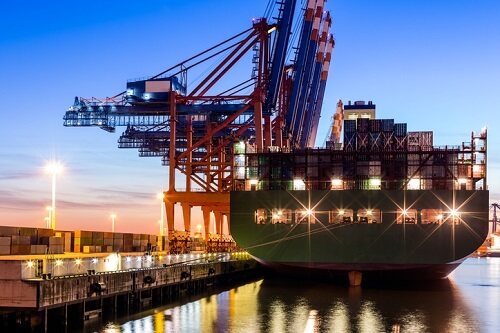

Shipping is the beating heart of the global economy. In 2017, approximately 90% of global trade was transported through international waters by more than 50,000 merchant ships carrying every kind of cargo.
Like many industries, the shipping sector is undergoing a transformation. The ships taking to our seas and the ports they dock in are now technology hubs filled with semi-autonomous machinery and systems. Maritime companies are under significant pressure to use that technology to create efficiencies and meet the demands of today’s just-in-time supply chains.
As the shipping industry sails the waves of change, is must also stem the tide of exposures battering its hull. Common risks like fire, poor weather, busy seas, political risk and piracy have been joined by the likes of cyber crime and the increasing pressures of operational safety standards.
The AGCS Safety and Shipping Review 2018 suggests human error continues to be a prevalent cause of loss because of the “increasing commercial pressure” upon captains and crews “as supply chains are streamlined.” In essence, tight schedules are pushing people to disregard safety best practices and make poor decisions.
“All stakeholders, whether shipboard or shoreside, need to get involved if the shipping industry wants to address behavioural and cultural risk and reduce losses caused by human error,” Kinsey told Insurance Business. “At AGCS, we try to get in front of our clients’ loss control rather than learn from the study of losses. In order for that to be successful, it requires a business transformation with full management engagement. A culture needs to be implemented from the top levels of management all the way down the chain.”
Despite modern ships being transformed by new technologies and systems, there are still very few fully autonomous operations upon a vessel. A modern merchant vessel requires significant human input for the navigation, the cargo loading, the machinery operation and so on. This dependence upon the human worker contributes to the percentage of shipping losses caused by human error.
“One of the keys to that is proper training and maintenance - making sure that when vessels are in port, the shipboard crews and supported by shoreside repair teams and given adequate spare parts so they can continue to operate safely and efficiently during their transits,” Kinsey commented. “However, with shipboard crews being so small and constraints on time and budget limiting in-port periods, adequate training and maintenance is sometimes missed. You simply can’t let safety and preventative maintenance go by the wayside.”
According to the AGCS Safety and Shipping Review 2018, there were 94 total shipping losses in 2017, the second lowest total in the past decade, which saw 1,129 losses overall. Over the past decade, total losses have declined by more than a third (38%), driven by improved ship design, technology and advances in risk management and safety.
Foundering (sinking) has been the cause of over half of the 1,129 total losses reported over the past decade. It accounted for an even higher share of 2017 losses (65%), with bad weather, machinery damage and fire/explosion losses being key factors.
“When you’re dealing with 75% of the earth’s surface being covered in water and the fact that problems often occur when vessels are far away from any help and support, a systems failure or a fire onboard can turn very bad very quickly,” said Kinsey. “Age and condition of vessels plays a part in this, and so does the proper declaring and packaging of cargo onboard. Again, the solution to that starts shoreside and needs to make its way onboard.
“As we look at the importance of just-in-time supply chains – which are the new norm now – and we look at the complex risks to complex vessel operations, it’s critical it doesn’t just fall on the vessel and the onboard crew to get from A to B. It needs to be a team effort.”
